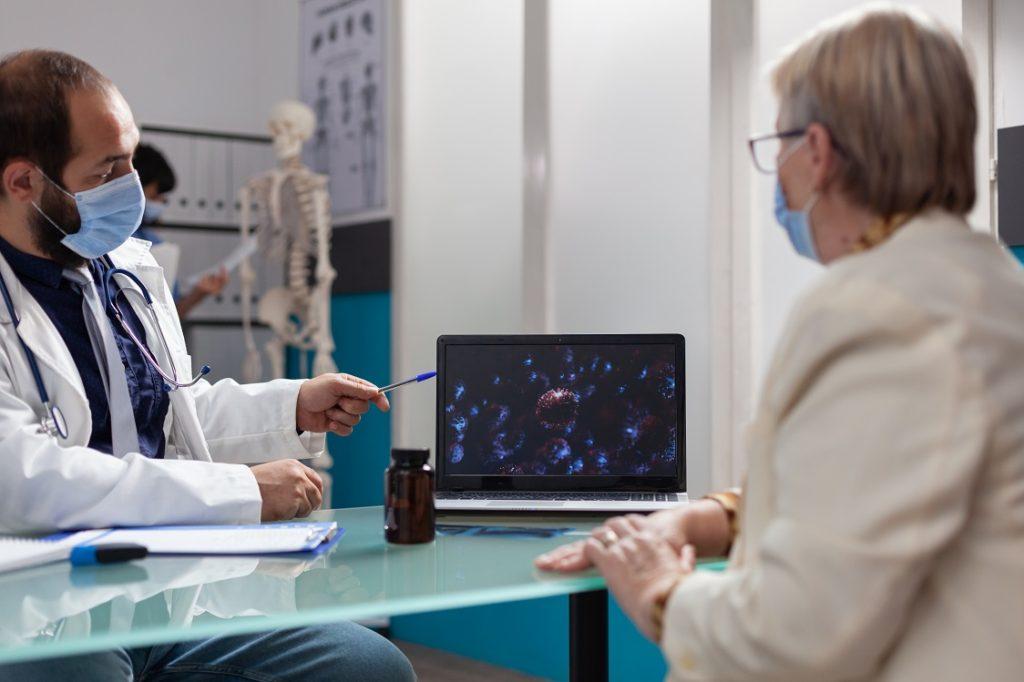
An Insight Into An Efficient Physician – Patient Communication
An Insight Into An Efficient Physician – Patient Communication
Physicians’ ability to effectively and compassionately communicate information is vital to a successful patient-physician relationship. The Accreditation Council for Graduate Medical Education identified interpersonal and communication skills together with five other areas in which physicians-in-training have to demonstrate competence. Patient outcomes, concerning their ability to reply to the treatment, also depend on successful communication. Effective communication in health care isn’t all that easy. Much is at stake- · Patients have to feel safe enough to communicate honestly and openly with their care providers to receive effective treatments. · Providers have to convey treatment plans and health education, accessibly, and empathetically so that patients can receive optimal care. · Administrators and providers have to share information ethically and responsibly to protect patient confidentiality. · Healthcare organizations have to apply culturally responsive measures to bridge communication gaps between stakeholders.
Barriers to Communication in Health Care
Communication is foundational to all or any layers of the healthcare system, but it’s often problematic. But the good news is, there are some best practices that healthcare professionals can follow to overcome the most common barriers to effective patient-communication.
1. Patient Distrust and Discomfort -At the patient-provider level, patients might not feel comfortable disclosing sensitive information, like substance misuse or sexual dysfunction, to their care providers. Patients tend to withhold significant medical information thanks to this
2. Common Language Barriers – Patients often have difficulty communicating needs or symptoms when their provider doesn’t speak their language or when the healthcare organization has not supplied an interpreter.
3. Providers Stretched Too Thin – Skillful communication enables healthcare providers to determine rapport with their patients, solicit crucial health information, and work effectively with all members of a care team and therefore the public. However, a packed clinical workday often requires providers to rush from appointment to appointment — leading to conditions in which communication can easily get lost in the shuffle.
4. Mismanaged Healthcare Files– With the growing amount of healthcare data, care teams have expanded in number and reach. Dozens of doctors, nurses, administrators, and other medical professionals at a hospital may all have to read a single patient file— opening the door to potential miscommunications which will affect treatment. This can also lead to the patient losing trust in the system
Strategies for Effective Health Communication • Sit Down and Be Humble
– Studies show that when a patient and their provider are seated during office visits and hospital check-ins, the 2 parties can build trust more easily. When a provider sits right down to talk with a patient, the patient perceives the visit to be more intimate.
• Monitor your visual communication – Good communication is an essential skill in healthcare, the shortage of which can lead to misunderstanding and anxiety among your patients. Assessing your visual communication can help you get in the same zone of thinking as your patients. attempt to maintain steady eye contact during the entire conversation and always face them while speaking.
• Speak in Plain Language – Providers should avoid medical jargon, where possible, and instead depend on plain language to communicate with patients. Where jargon is appropriate, providers should define the medical language clearly. Speaking in plain language communicates to patients that providers care about having a two-way conversation with them, instead of just delivering a monologue.
• Ask Open-Ended Questions – Patients often feel uncomfortable voicing their concerns, even after some minutes of empathetic conversation. Doctors and other care providers should ask whether patients have more to mention. Asking patients if there is something else they’d wish to talk about can create space for patients to reflect and voice concerns they could not have mentioned otherwise.
• Summarize throughout – Summarize what the patient is saying, not just at the top of the consultation but all the way through. Asking the patient if you’ve correctly understood the key points of their story shows that you simply are listening and care that you’ve got it right.
• Start sharing your notes with your patients – Note-taking enables the recall and synthesis of the latest information. Sharing your notes won’t only force you to raise your game but also help your patients share your conclusions and remarks with their friends and relations who were not present during the time of consultation. Handling a difficult patient is a challenge in itself. Physicians perceive up to an estimated 15% of patient encounters as challenging or tricky, and it’s tempting to shift the blame. There might be a myriad of factors affecting the behavior of your patients. you would possibly lose calm and lash out, but following a mental model can guide you through the chaos. Several models help facilitate effective physician-patient communication. Physicians who encourage open communication often obtain more complete information, enhancing accuracy of diagnosis, to facilitate appropriate counseling. This potentially improves adherence to treatment plans that benefit long-term health. This sort of communication, which can be referred to as the
Partnership Model, increases patient involvement in their healthcare through negotiation and consensus-building between the patient and physician. In this model, physicians use a participatory sort of conversation, where physicians and patients spend an equal amount of time talking to each other. Another communication tool, AIDET, developed by Studer Group, is gaining popularity among a variety of hospitals. The basics of AIDET are Acknowledge, Introduce, Duration, Explanation, and many Thanks. Another model called the
RESPECT Model widely promotes physicians’ awareness of their own cultural biases and helps develop rapport with patients from different cultural backgrounds.
The RESPECT Model includes seven core elements:
1. Rapport
2. Empathy
3. Support
4. Partnership
5. Explanations
6. Cultural Competence
7. Trust Effective communication in healthcare can make life-changing differences.
Health administrators and other healthcare professionals can enjoy learning more about sorts of communication in health care, barriers to communication in health care, and evidence-based strategies for effective communication in healthcare today.